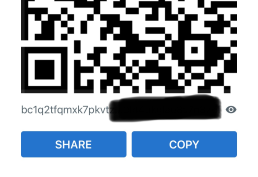Introduction
After delivering numerous free and paid training sessions on Bitcoin, both online and in person, one thing has consistently stood out to me as a fundamental obstacle for everyone: overthinking.
Dear people, we’re making it all far too complicated! Of course, if you want to truly understand the power and greatness of Bitcoin, it will be a relatively long journey. And naturally, if you’re going to store a lot of wealth in Bitcoin, you will need to organize this in an extremely professional manner, which will require a considerable amount of time and energy.
But when you start something new, you don’t expect to be an expert right away, do you? If you start playing football or tennis, you don’t immediately compete with Messi or Djokovic, right? Exactly. So you start with the basics.
However, you want to get those basics right from the start! That’s precisely why I’ve written this blog, so you can begin your Bitcoin journey with peace of mind, starting simply but in a way that allows you to (if you wish) eventually progress to the next level. We do this in 3 simple steps:
- Buying Bitcoin Safely
- Create Your Own Private Wallet
- Transferring Bitcoin Safely & Storing Bitcoin In Your Private Wallet
(per paragraph I’ve even linked to video’s specifically recorded for this blogpost)
1- Buying Bitcoin Safely
This is where it all begins. How do I buy Bitcoin safely? While there are many places where you can “safely” buy Bitcoin, it largely depends on how much you value things like privacy versus a bit of protection. Generally, the more privacy you want, the more it comes down to your own responsibility, and thus the less protection you enjoy from a third party (central authority). Personally, and this is my opinion, I find Bitcoin very special precisely because you don’t have to depend on third parties and can finally have full control over your money. Unlike your money in the bank, or anywhere else (except cash in your pocket, or gold in your safe). It is a specific feature of Bitcoin that makes it so special, so realize this when making your choice.
You can acquire Bitcoin in three ways, assuming you are not going to mine it yourself (we will return to this in the article: Bitcoin for professionals).
A. Buying Bitcoin on a Centralized Bitcoin (& Crypto) Exchange
I want to keep the blog relatively short & powerful so that everyone can go through it quickly, so it doesn’t become too much and too difficult. There is a lot to say about which Exchange to use or not, but I believe you should always buy Bitcoin from a Bitcoin ONLY Exchange. These companies often adhere to Bitcoin’s core values and are, in my opinion, relatively more reliable. These companies remain steadfast during market difficulties because they don’t “gamble” with their customers’ funds, unlike most Crypto exchanges.
Well-known names that have never disappointed me so far are Swan Bitcoin, River, Relai, Strike & Bitonic.
If, for any reason, you don’t have access to such an exchange, you can go to the larger names that also sell other cryptocurrencies such as Coinbase, Kraken, Bitvavo, or another. Basically, all centralized exchanges work the same way: you create an account, enter your details, wait for you and your bank details to be approved, and you can simply buy Bitcoin with your dollars, euros, pounds, etc., by transferring it to your account, and from there purchasing Bitcoin.
Easy peasy.
Check here the video where I easily buy Bitcoin via Coinbase.
B. Buying Bitcoin on a Peer to Peer Exchange (not for now)
I’m including this briefly so you know the option exists to buy Bitcoin more privately and without KYC on various websites from different parties. It does require a bit more knowledge and, above all, confidence in yourself to do this in a relaxed manner, and moreover, you must already possess your own Bitcoin (private) wallet (see “Storing Bitcoin Safely”). I’m mentioning this option so that you are aware of it and can learn to use it as you progress in your process. If you want to learn more about this, check out one of our other articles for “intermediate” or “expert” levels. A platform that is very well-known within the Bitcoin community is HODL HODL. An advantage of buying Bitcoin on such a platform is that no KYC is required, allowing you to better protect your privacy, and there are no third parties who know how much Bitcoin you own.
C. Selling Your Goods & Services Directly for Bitcoin (not for now)
This is probably an option that doesn’t necessarily belong in an article for beginners. The reason I mention it is so you immediately shift your mindset to: Wait a minute, can I just trade my time and energy for Bitcoin? Yes, you can. Super simple. You offer your service as always and ask for Bitcoin in return instead of dollars or euros. If this person has Bitcoin, he or she can easily transfer Bitcoin to your wallet. But, again, you must already have your own Bitcoin private wallet to make this possible. And so we discuss this further below, as we ABSOLUTELY believe this is a necessary step, even for beginners.
2- Create Your Own Private Wallet
Now that we have easily purchased some Bitcoin with our hard-earned euros or dollars, we want to ensure that the Bitcoin we bought is truly under our own control.
Why have it under your own control?
So that no one can ever take it from you or use it behind the scenes. Crypto exchanges have a reputation for investing your funds behind the scenes to make more profit, which is why I believe you should never, ever leave your Bitcoin on an exchange. Educate yourself, now that you have taken your first steps in your Bitcoin journey, to store it properly in a (digital) wallet where only you have the keys 🙂
That is what “non-custodial” means.
You download a Bitcoin (only) wallet on your phone or computer, write down the 12 or 24 words (your secret phrase) that are automatically generated on a piece of paper, and create a completely unique digital wallet. These 12 or 24 words are VERY important. Because this is your key to the wallet in question. This key is your “backup” in case your phone or computer dies, so you can still access your money. So NEVER show these 12 or 24 words to anyone else, and store them somewhere safe where no one can find them. If you lose the 12 or 24 words and also lose access to your phone, you will lose access to your money. That is ALSO what “own control” means. As I said, the more you safeguard your “privacy,” the greater your own responsibility.
Examples of Private Wallets
Private wallets that I am VERY fond of and have used for a long time are:
Desktop:
- Sparrow wallet (Bitcoin-only)
- Nunchuk wallet (Bitcoin-only)
- Blue wallet (Bitcoin-only)
Mobile:
- Relai wallet (Bitcoin-only)
- MUUN wallet (Bitcoin-only)
- Nunchuk wallet (Bitcoin-only)
- Theya wallet (Bitcoin-only)
- Aqua wallet (Bitcoin-only)
P.S. Because Bitcoin-only software, both for desktop and mobile, is generally perceived and experienced by beginners as somewhat more difficult than a standard “crypto wallet,” I’ve recorded a video on how to create and set up a Sparrow (hot) wallet on the desktop to safely send your Bitcoin there.
Check the video where I set up a Sparrow (private) hot wallet here
3- Transferring Bitcoin Safely & Storing Bitcoin In Your Private Wallet
To summarize, you now have an account with an exchange where you can neatly exchange your fiat money for Bitcoin. However, since you don’t have full control over it there, you have wisely created a private (hot) wallet on your phone or desktop, where you can now receive that Bitcoin. But of course, it’s still ON the exchange. And as discussed, you prefer not to leave it there because you then still don’t have full control over your own money, which is a crucial feature of Bitcoin.
Verifying with the Exchange that it is really your wallet
Laws and regulations have changed in many countries, becoming stricter in this regard. This means that the exchanges often need to double-check whether the address of the newly created wallet actually belongs to you. This requires, at some exchanges, that you send screenshots of your wallet to prove that you actually own the wallet and are thus transferring your money to yourself. This process is self-explanatory, but it’s good to know that you need to be patient and go through this step.
Actually sending the Bitcoin
Once your wallet is “approved” by the exchange, you can transfer your Bitcoin to your own wallet, ensuring that you have full control over your Bitcoin 🙂
Do this by going to “assets” within your exchange, selecting Bitcoin, and then clicking on send. There you need to enter your own Bitcoin Private Wallet address, which can be easily found within your own newly created wallet (click on “receive” in your wallet and copy the Bitcoin address).
An address typically looks like this: Bc1qrun2m2ds………(several more numbers and letters, see photo)

Once you have double-checked the address, you can click send, and it will be confirmed in your own wallet within about 10-20 minutes.
Here the video where we send Bitcoin from Coinbase to our own Private wallet!
Closing Words
Congratulations!! You have just embarked on your Bitcoin journey and become 100% owner of your own funds. The why, what, and how of Bitcoin goes much deeper, and as you store more wealth in Bitcoin, it will become increasingly important to understand all of that. But for now, as a beginner, you have taken a fantastic step and moved off zero 🙂
What have we done?
Step 1: Found an exchange and opened an account there.
Step 2: Downloaded and created a Bitcoin-only mobile or desktop wallet.
Step 3: Purchased Bitcoin on the said exchange and then transferred it to our own (private) wallet.
You have now both purchased your first Bitcoin and completed your first Bitcoin transaction.
Amazing!!
Want to learn more about what it means to become a member of our community and be able to check out way more in depth content so you can learn how to benefit from the global transition that is taking place? https://cryptounseen.com/crypto-unseen-community
Want to learn more about “the Why, What & How of Bitcoin” sign up here for the free monthly training: https://cryptounseen.com/free-2-hour-training-about-the-why-what-how-of-bitcoin-crypto
Also, follow us on LinkedIn, Instagram and/or my personal Twitter here.
Subscribe to our free newsletter!
Marc
Meet Marc—with a unique history of studying psychology, poker, and performing sales on high levels, he eventually ended up with a curious eye for the world of money. He dove into traditional investing and even surfed the wild waves of "shitcoins" in the crypto space. But it was the wake-up call of the 2020 pandemic that really opened his eyes to the true power governments wield and how little control individuals have over their financial destiny. The broken fiat currencies within the traditional financial system and the rampant scams, lies, and rug-pulling in the crypto space lit a fire within him, driving his unwavering enthusiasm for 100% Bitcoin.
Fueled by this newfound awareness and his connection with a company called Awake Origins, Marc embarked on a remarkable spiritual journey, selling everything and traveling the globe with his family for nearly three years. Along the way, he couldn't help but ponder some big questions about money, economics, and global wealth disparities. These musings eventually led him to the fascinating world of Bitcoin, a place he's never looked back from. Today, Marc dedicates his time to helping folks and businesses seamlessly integrate Bitcoin into their daily lives, all while continuing his global adventures.


